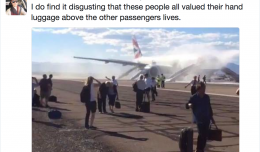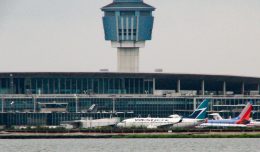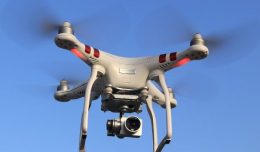The United States is entering the third week of a partial government shutdown, and there is no end in sight. One of the departments affected is the Department of Transportation under which the Federal Aviation Administration is housed. Only a small number of FAA employees have been furloughed and forced to stay at home during the government shutdown. Most employees have been required to work with the promise of pay once funds are fully appropriated. Most of those working are air traffic controllers and equipment maintenance personnel.
The effect and impact of a government shutdown on the FAA could be avoided by a change in how funds to the Agency are appropriated. Currently, most of the FAA’s budget is comprised of funds from the Airport and Airway Trust Fund (AATF) with the remaining budgetary needs coming from the United States General Fund. Specifically, the percentages funded by the AATF are:
- 92.77% in FY 15
- 87.79% in FY 16
- 94.80% in FY 17
- 86.69% in FY 18
The AATF collects fees and taxes from users of the NAS and the breakdown is as follows:
- Domestic Passenger Tax 7.5%
- Domestic Cargo or Mail 6.25%
- Domestic flight segment tax $4.20 per passenger/segment
- Tax on flights to AK/HI from the continental US $9.20 per passenger
- International Arrival/Departure Tax $18.30 per passenger
- Mileage Award Tax 7.5% of value of miles
- Domestic commercial fuel tax 4.3¢ per gallon
- Domestic general aviation gas tax 19.3¢ per gallon
- Domestic general aviation jet fuel tax 21.8¢ per gal (14.1¢ per gal on fractional owned flights)
So, the FAA is already remarkably close to being fully funded by the AATF. However, the FAA cannot use any of the AATF funds without an appropriation from Congress. This has repeatedly left the FAA vulnerable to politics. Why not completely fund the Agency from the AATF and make those funds immediately available without being subject to appropriations? Rep. Peter DeFazio’s (D-OR) H.R. 2800 from the 115th Congress sought to do this, but never made it out of committee. This legislation would have given the FAA the authority to use AATF funds as they are received without separate appropriation legislation. That would’ve only made AATF funds available, but not any of the makeup funds from the General Fund.
So how does the difference between funds available in the AATF and funds allocated from the general fund get resolved? Over the years, a few changes in the aviation industry have occurred. One is that airplanes have gotten more fuel efficient. Another change is that the FAA has implemented airspace changes that allow for more direct routing between terminals. The domestic commercial fuel tax has remained steady at 4.3 cents per gallon since at least 1997 when the Taxpayer Relief Act of 1997 was enacted. With more efficient planes flying more direct routes; the airlines do not have to purchase as much fuel, thereby reducing the tax revenues collected from commercial fuel purchases. Commercial fuel taxes comprised 2.8% of the AATF FY 2016 Excise Tax revenue. A modest increase in this commercial fuel tax might help offset the efficiency gains and provide increased revenue in the AATF.
Another opportunity to increase AATF revenue can come from the profits of airline upselling. Currently, the only tax is on the airfare itself. But once the ticket is purchased, the airlines have a myriad of ways to extract more money from the customer. Certain seats are now upgrades for a fee. Want to check a bag? There’s a fee. How about a change in itinerary? That’ll cost you too. Want a meal? You guessed it, more money. These fees are NOT subject to any excise taxes but keep the airlines very profitable. The airlines should be making as much money as possible. There is no issue with charging a very low fare and letting the customer decide how much more to spend. But the fare is the only part of the trip that is subject to the ticket tax. All expenses should get summed onto one receipt for each trip and then 7.5% applied against all incurred charges.
The FAA and the National Airspace System (NAS) should be insulated from the risk and expense that a lapse in appropriations creates. There are added costs for the FAA when a shutdown occurs, as contracts and programs are shut down and restarted. Costs incurred by contractors and programs for shutting down and restarting are not built into the original funding; thereby these additional costs are passed along to the FAA. The time is right to reconsider how FAA operations are funded. It’s never desirable to raise fees or impose taxes; but the current fee and tax structure is outdated given the current market. The safety of the flying public and the economic engine of the United States economy deserve to be insulated from the whims of political impasses. Therefore, the 116th Congress should increase the fees and taxes paid into the AATF to reduce the burden on the overall federal budget. Additionally, legislation should be enacted to make AATF funds available for immediate use by the FAA.







